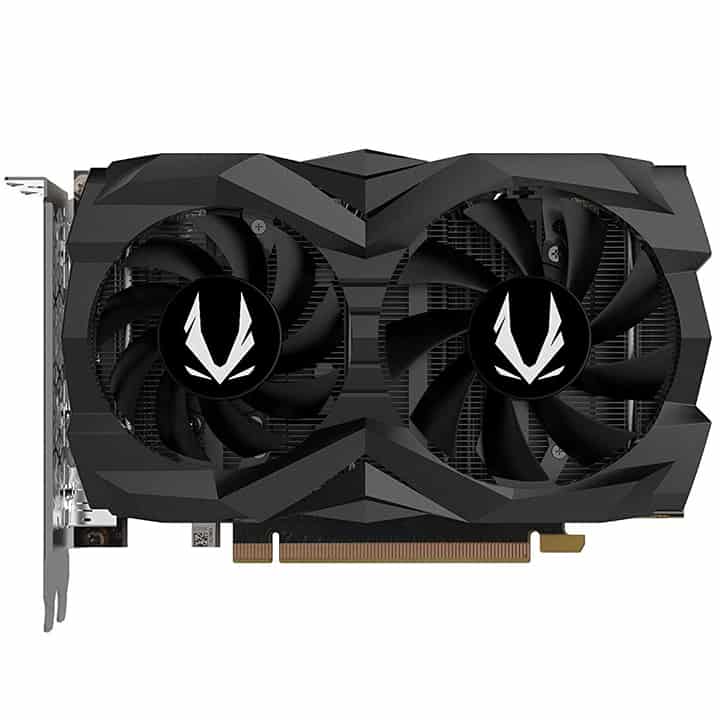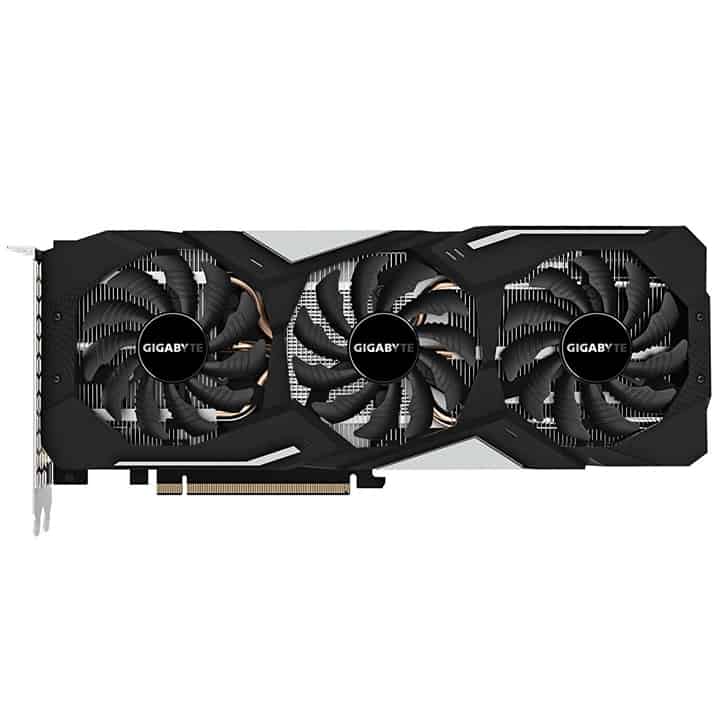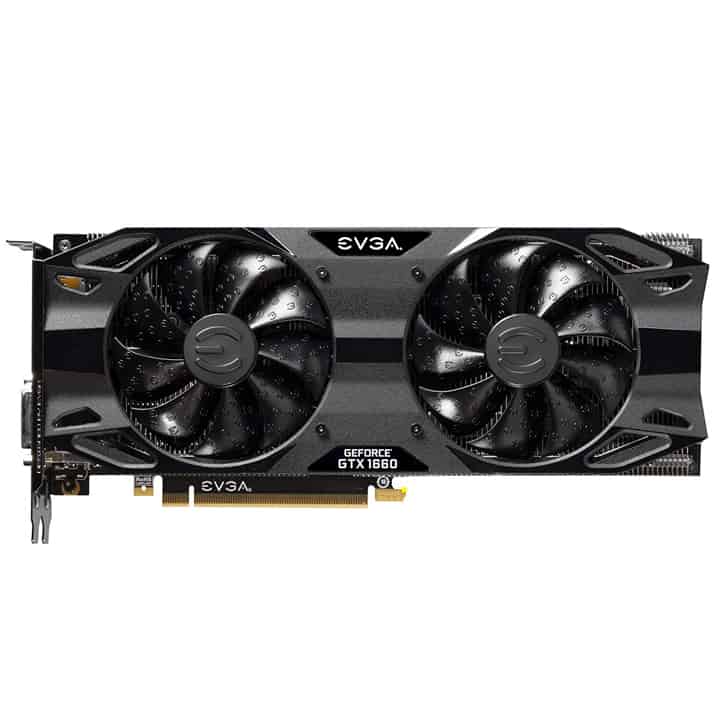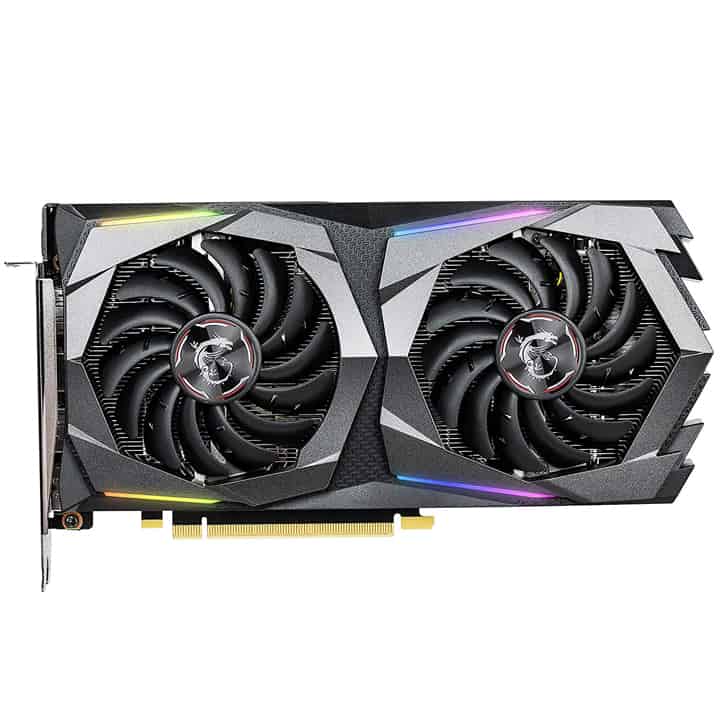The Best GTX 1660 Graphics Card For 2023
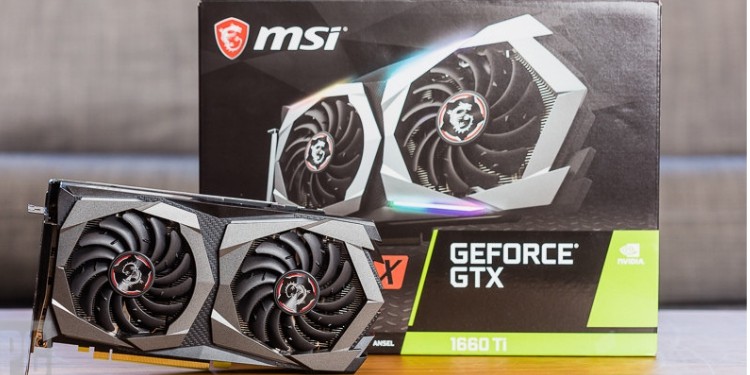
Table of Contents
Nvidia's latest budget GPU is billed as a competitor for AMD's budget king, the RX 580. Built on the same Nvidia Turing architecture that the recent RTX line of cards are built around, the GeForce GTX 1660 more than succeeds as a competitor in this price range. If you want excellent 1080p gaming and strong VR/1440p gaming, then the GTX 1660 may just be the right card for you. But what's the best GTX 1660?
If you are unfamiliar with GPU specs or how the GTX 1660 performs, feel free to scroll past our GTX 1660 reviews and peruse the buying guide. We'll fill you in on all you need to know there. If you haven't skipped ahead, though…let's get into it!
Prime Day is finally here! Find all the biggest tech and PC deals below.
- Sapphire 11348-03-20G Pulse AMD Radeon™ RX 9070 XT Was $779 Now $739
- AMD Ryzen 7 7800X3D 8-Core, 16-Thread Desktop Processor Was $449 Now $341
- ASUS RTX™ 5060 OC Edition Graphics Card Was $379 Now $339
- LG 77-Inch Class OLED evo AI 4K C5 Series Smart TV Was $3,696 Now $2,796
- Intel® Core™ i7-14700K New Gaming Desktop Was $320.99 Now $274
- Lexar 2TB NM1090 w/HeatSink SSD PCIe Gen5x4 NVMe M.2 Was $281.97 Now $214.98
- Apple Watch Series 10 GPS + Cellular 42mm case Smartwatch Was $499.99 Now $379.99
- ASUS ROG Strix G16 (2025) 16" FHD, RTX 5060 gaming laptop Was $1,499.99 Now $1,274.99
- Apple iPad mini (A17 Pro): Apple Intelligence Was $499.99 Now $379.99
*Prices and savings subject to change. Click through to get the current prices.
Note: The GTX 1660's MSRP starts at $219, and every card in this article is at least $10 higher than this. We did this because this is a best of, and that extra $10 is usually well worth the money!
smallest GTX 1660
ZOTAC Gaming GTX 1660
- Clock Speed: 1785 MHz
- VRAM: 6GB GDDR5
- Width: 2-Slot
- Length: 174 mm
- Ports: 3 DP; 1 HDMI
View Latest DealRead Full Review
fastest GTX 1660
Gigabyte Windforce AORUS GTX 1660
- Clock Speed: 1860 MHz
- VRAM: 6GB GDDR5
- Width: 2-Slot
- Length: 280 mm
- Ports: 3 DP; 1 HDMI
View Latest DealRead Full Review
best balanced
EVGA XC Ultra GTX 1660
- Clock Speed: 1845 MHz
- VRAM: 6GB GDDR5
- Width: 2-Slot
- Length: 268 mm
- Ports: 1 DVI, 1 DP, 1 HDMI
View Latest DealRead Full Review
best RGB
MSI Gaming X GTX 1660
- Clock Speed: 1860 MHz
- VRAM: 6GB GDDR5
- Width: 2-Slot
- Length: 247 mm
- Ports: 3 DP, 1 HDMI
View Latest DealRead Full Review
1. ZOTAC Gaming GTX 1660
ZOTAC gives us the smallest GTX 1660

- Clock Speed: 1785 MHz
- VRAM: 6GB GDDR5
- Width: 2-Slot
- Length: 174 mm
- Ports: 3 DP; 1 HDMI
- Only marginally higher price than MSRP
- Smallest size
- Low clock due to smaller cooler
First up on our list is the ZOTAC Gaming GTX 1660.
The main benefit this card offers over the others on this list is its much smaller size, which means it should more easily fit into most PC builds. This applies especially to Mini ITX and Micro ATX cases, where shorter GPUs are typically necessary for anything resembling a good building experience. If you're building an SFF PC build on a budget, then the Zotac GTX 1660 is definitely the right card for you.
This does come with a few compromises, though. The main downside here is a lower clock speed, though this comes with the territory of smaller GPUs. Since you don't have as much cooler to work with, you likely won't be able to push user-end overclocking very far, either, though investing in better case airflow may alleviate this problem slightly.
Don't let that downside turn you away if you're building in a small chassis, though: this is still one of your best options in the sub-$300 price range. Lower factory OC notwithstanding, this should still perform as a GTX 1660 should, which means superb 1080p and strong 1440p/VR performance.
If you do have the room to spare, take a look at our other picks.
2. Gigabyte Windforce AORUS GTX 1660
Gigabyte's Windforce is the fastest GTX 1660…with a catch

- Clock Speed: 1860 MHz
- VRAM: 6GB GDDR5
- Width: 2-Slot
- Length: 280 mm
- Ports: 3 DP; 1 HDMI
- Only marginally higher price than MSRP
- One of the highest clocks
- Light RGB
- The largest, ergo hardest to fit in most cases
On the opposite end of the spectrum from our previous card, Gigabyte's Windforce AORUS GTX 1660 is the largest GTX 1660. At a whopping 280mm (that's just over 11 inches), this card will definitely be challenging to stuff into any Micro ATX or Mini ITX tower. Even a few ATX cases with aggressive drive bays might prove a little challenging for this one. We'll admit: that isn't the greatest news.
But if your case can fit this GPU, it's easily one of your best options. It, along with our RGB pick, has the highest out-of-box factory overclock. Its large size and excellent cooler design mean you should be able to push that even farther as a user, though obviously, you'll want good airflow to make the most of that potential. It seems to stay at MSRP, too, which is nice.
It even has RGB! …sort of… it's only for the Gigabyte logo. It's not all that flashy, to be honest.
3. EVGA XC Ultra GTX 1660
The EVGA XC Ultra is the best balanced GTX 1660

- Clock Speed: 1845 MHz
- VRAM: 6GB GDDR5
- Width: 2-Slot
- Length: 268 mm
- Ports: 1 DVI, 1 DP, 1 HDMI
- Supports DVI, EVGA warranty
- Respectably high factory OC
- Slightly higher than MSRP
- Slightly larger than average
The EVGA XC Ultra GTX 1660 is our pick for best balanced GTX 1660.
“Best balanced?” Some of you may be muttering to yourself, “What does that even mean?” Great question, hypothetical human! By “balanced”, I mean balanced in terms of pricing, features, length, and cooling.
In terms of price, this card is another bump over MSRP compared to our cheaper picks, but in return, you get EVGA's excellent cooler design and overclocking-friendly design. You also get a DVI port, which is great for many PC users who are still using DVI with their displays.
The size is a little bit longer than your average GPU, but in return you get better cooling capability. The factory OC is relatively modest here, but we've seen it pushed much farther than this online, and we're confident that with good chassis airflow you'll be able to push it even farther.
Also, EVGA customer support is the best in the business when it comes to GPUs. That by itself helps raise this card a little bit above the rest of the competition.
4. MSI Gaming X GTX 1660
This MSI card is the best RGB GTX 1660

- Clock Speed: 1860 MHz
- VRAM: 6GB GDDR5
- Width: 2-Slot
- Length: 247 mm
- Ports: 3 DP, 1 HDMI
- RGB
- High factory OC
- Standard GPU size
- Much higher than MSRP
Last but not least is our “aesthetic” pick, the MSI Gaming GTX 1660. What makes it “Gaming”? The RGB lights around the fans and in the logo, of course!
This card is for users who want a GTX 1660, but also want to flex a little bit with extra visual flair. It is not the most rational purchase, since its price lines up with the starting MSRP of the GTX 1660 Ti, but if you were in the market for an RGB version of that, it'd also be much more expensive. The market segment this card targets is just a little different than your typical performance junkies.
Performance junkies will likely be satisfied, though! This card also has the highest factory overclock that a GTX 1660 seems to be capable of achieving, boasting a meaty 1860 MHz. While the cooler design does raise the question of just how far this card can be overclocked, we generally trust MSI to put out a card that can be respectably overclocked by the end user.
If saving money isn't your top concern and you want to spend extra for visual flair, this is a very good graphics card. If you want the best bang for your buck, though, you may want to consider one of the picks listed above.
Buying the best GTX 1660 for you
If you had trouble breaking down all the specs and jargon presented earlier, don't worry: we'll help you understand just what we're talking about in this buying guide section of the article. If you still have any lingering questions after finishing the buying guide, feel free to leave a comment and we'll help you as quickly as we can.
How does the GTX 1660 perform?
The GTX 1660 is built for superb 1080p gaming in even the most testing scenarios, as well as strong 1440p and VR performance. Compared to modern consoles and their tendency to play at 900p/1080p and 30 FPS, the 1660 can very regularly push a native 1080p or 1440p at 60 FPS, with the added benefit of higher visual settings. This puts it in a league well above that of any console, even something like the PS4 Pro.
For a more detailed breakdown of how the GTX 1660 performs in the most strenuous scenarios, look above to see Digital Foundry's benchmarks. These are worst-case scenarios, mind, using the highest graphics settings in the most strenuous modern games. With intelligent settings adjustments, 1440p gaming is very possible.
(We're just going to say it: Assassin's Creed Odyssey has garbage performance optimization.)
How does the GTX 1660 compare to the RX 580 and 590?
Running at stock clocks, the GTX 1660 decimates– we're looking at a roughly 15% performance increase– the RX 580 and is often available for the same price. While the 1660 doesn't have that stellar AMD Game Bundle going for it, that game bundle is also going to expire by the end of April 2019, at which point a significant price drop will be needed for the RX 580 to stay competitive.
The RX 590, meanwhile, pretty much performs the same as the GTX 1660… but the 1660 is also much cheaper, with an MSRP of $220 versus the 590's MSRP of $280 (which pushes the 590 up into the 1660 Ti price range). This price range sees a hard win in Nvidia's favor, though AMD dominated here for a very long time.
How do length and width matter?
Length and width are the physical measurements of the card you're getting. Not every GTX 1660 will be the same shape and size– each manufacturer is going to have a different length, width, and cooler design for their card.
Longer length and width will generally mean better cooling and overclocks, but at the expense of taking up more room in your case. (Perhaps to the point of not fitting if you're placing it into a Micro ATX or Mini ITX tower.) Smaller dimensions mean the card will fit better in more cases, but may not have the cooling capacity to be pushed to higher overclocks.
The most important of the two measurements is length. Width counts the number of PCI slots the card takes up, which shouldn't ever be a problem for the majority of users. Length will better determine how it actually fits in your chassis, though, and this is where you'll want to check against your case's specs to be sure.
What does clock speed change?
Clock speed doesn't really work as a way to measure speed across different GPU architectures, but as a way to measure speed across the same version of a different GPU… it works mostly as intended.
Most of the cards in this list are shipping with their own factory overclocks– the higher the factory overclock, the higher the out-of-box performance you can expect to receive from this card. If you want to know more about this, then we actually have an article all about overclocking that you can read.
What about ports?
Generally speaking, you'll see the following three types of ports on a modern Nvidia GPU:
- HDMI – The most common standard for HDTVs and modern monitors.
- DisplayPort – A more monitor-centric standard, especially for 1440p+ and 144 Hz displays.
- USB-C – Used with certain VR headset configurations and compatible displays.
If you somehow don't have any of these connectors for your display, don't worry. DVI to HDMI connectors exist for exactly that reason.

